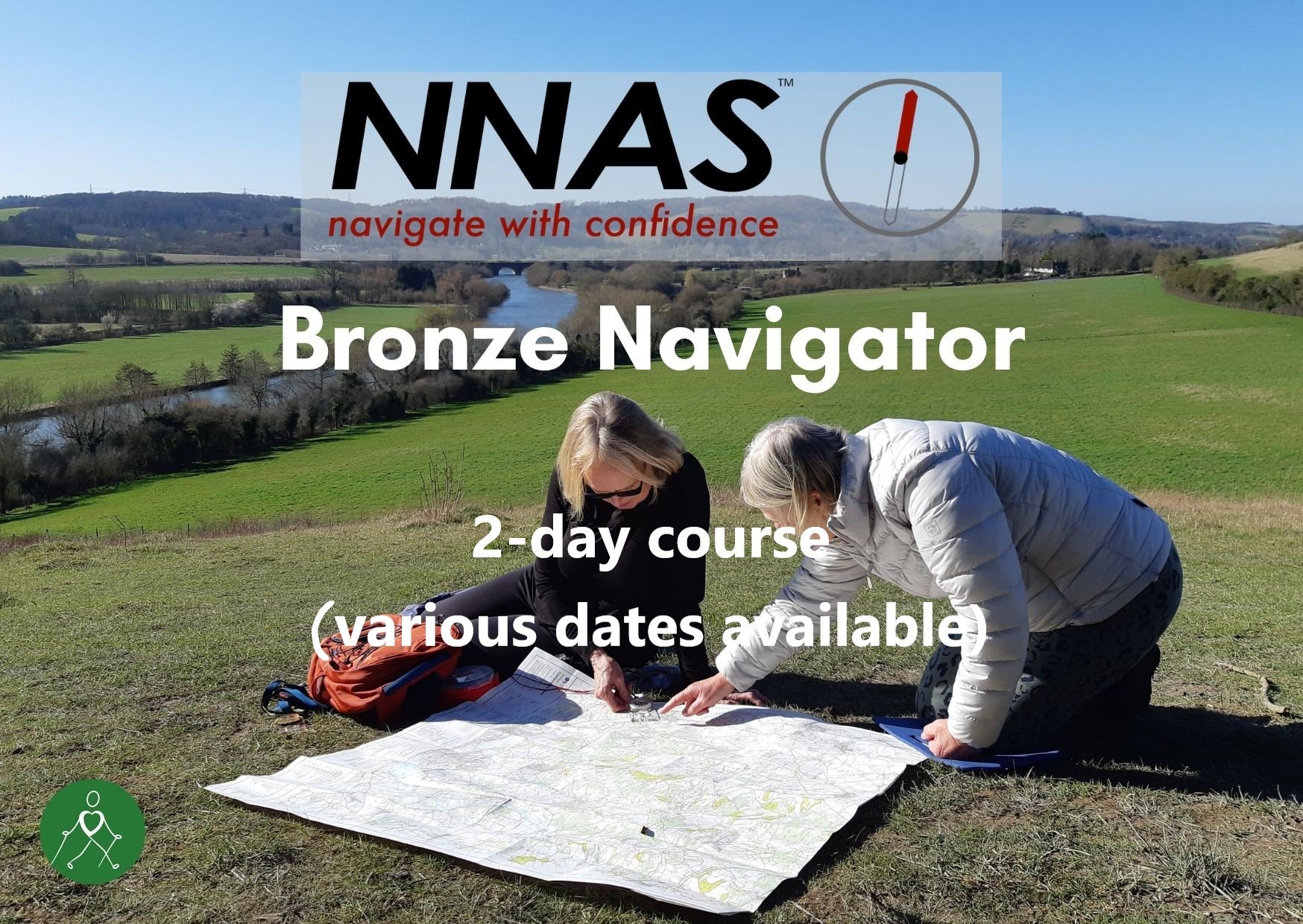Literary Hitchhiking – ‘Up on the Downs’
/Nobody can’t stop ‘ee. It’s a footpath right enough - Edward Thomas
There are many literary connections with the North Wessex Downs - poets and writers all united by their deep love of nature and the English countryside. We often tread the same paths walking in their footsteps and our North Wessex Downs Walking Festival walk up on the Berkshire Downs around the historic village of Aldworth was no exception.
It was a damp June day and as we stated out from Streatley the first poet we encounter is John Masefield. In his poem Tewkesbury Road, Masefield pens...
It is good to be out on the road... Under the flying white clouds, and the broad blue lift of the sky.
For us, however, we would be walking under dramatic moody grey skies! But not to be deterred by a little rain, we lifted our spirits with a few more words from Tewksbury Road and set off to literary hitchhike up on the Downs:
O, to feel the beat of the rain, and the homely smell of the earth,
Is a tune for the blood to jig to, and joy past power of words;
John Masefield (1878 – 1967) is one of three Poet Laureates we encounter on our walk. He and his wife Constance lived nearby at the foot of the Downs at Lollingdon Farm and it is here where John, inspired by the deeply historic landscape around him, wrote Lollingdon Downs, August 1914 and Up on the Downs.
Our walking route from Streatley up onto the Downs was along the Ridgeway, Britain’s oldest road and one of England’s National Trails. Many have written about this ancient route including the Victorian nature writer Richard Jefferies (1848 – 1887). He immersed himself in the countryside and nature and knew the Downs well, and in Wildlife in a Southern County (1879) recorded that
A broad green track runs for many a long, long mile across the downs, now following the ridges, now winding past at the foot of a grassy slope, then stretching away through a cornfield and fallow.
Kenneth Grahame (1859 –1932) in his Pagan Papers (1898) (and far from the watery world of Mr Toad and Ratty in Wind in the Willows) also wrote about the Ridgeway:
Out on that almost trackless expanse of billowy Downs such a track is in some sort humanly companionable: it really seems to lead you by the hand.
Eager to discover more we continued on in the footsteps of our pagan ancestors, allowing the track to lead us as we marvelled at the landscape around us and pondered the people who had also trodden this way over the millennia.
On reaching Streatley Warren we paused to admire an ancient landscape, forged over time, and the commanding views down the valley towards the Thames and the Chilterns escarpment. It was easy to sense how this place, in one of England’s finest Areas of Outstanding Beauty, has inspired so many.
The poet Edward Thomas had roamed over the Downs here when researching his works The Icknield Way (1913) and In Pursuit of Spring (1914). In The Icknield Way he eloquently describes the spot where we now stood:
Below on the left, were the steep walls of the winding coombe dotted by thorn, juniper and elder, and here called Streatley Warren. Of the unwooded coombes or inlets into the downs this is one of the most pleasing to me, and I shall always remember it... and others of those vast turf halls which the sky roofs.
Edward Thomas was a nomadic roaming nature poet, highly influenced by Richard Jefferies from whom he drew much inspiration. In 1909 Thomas wrote a biography of Jefferies in which he captures the sense of remoteness and vastness of the landscape:
The Downs … are among the highest, most spacious, and most divinely carved in rolling ridge and hollow flank … Jefferies often thought of the sea upon these hills. The eye sometimes expects it. There is something oceanic in their magnitude, their ease, their solitude above all, in their liquid forms, that combine apparent mobility with placidity, and in the vast playground which they provide for the shadows of the clouds.
Thomas also knew of and admired John Masefield and he mentions Lollingdon Farm in his book, The Icknield Way.
It was soon time for us to leave the Ridgeway and head towards Aldworth. As we walked through the heart of the downs under the broad moody sky we chattered and expressed our own thoughts and feelings of remoteness comparing to those of Thomas and Jefferies.
Approaching Aldworth we pause at Dumworth Farm, a fine example of an English downlands farm, complete with soft red brick farmhouse house and cavernous timber barns. It is here that Richard Graves (1715 – 1804) lodged with the Bartholomew family during his tenure as curate of St Mary’s Church, Aldworth (1744 to 1748). Graves was a cleric, poet, and novelist perhaps best remembered for his picaresque novel The Spiritual Quixote, or the Summer's Ramble of Mr. Geoffrey Wildgoose, a Comic Romance (anon.) (1773); a satire on John Wesley and George Whitefield and which ridicules Methodism. However, of much amusement to our group of walkers was the fact that Graves eloped to London with the farmer’s daughter!
We amble on a short distance to the picturesque flint church where Graves had been curate and discovered connections with three more poets.
First, close to the beech hedge bounding the churchyard, we discover the slate memorial stone to Laurence Binyon (1869-1943) whose ashes are buried here with those of his wife Cicely. Binyon had moved to Westridge Farmhouse, Westridge Green on his retirement in 1933. He knew other poets living nearby – Robert Bridges (Yattendon and Boar’s Hill) and John Masefield (Lollingdon) and would often tromp over the Downs to visit and walk with them.
The poetry of Laurence Binyon reveals a deep love of nature; he believed that the beauty of growing things could heal a war-torn world. He wrote some of his finest poetry whilst living here and is especially remembered for the words of his poem “For the Fallen”, inscribed on Lutyen’s Cenotaph in Whitehall and central to Remembrance Day Services:
They shall grow not old, as we that are left grow old:
Age shall not weary them, nor the years condemn.
At the going down of the sun and in the morning
We will remember them.
Elsewhere in the churchyard we find connections to Lord Alfred Tennyson (1809 – 1892 and Poet Laureate 1850 –1892). In 1850 Tennyson married Emily Sellwood. The large tomb enclosed by railings is that of Emily’s grandparents and uncle and aunt; the family home being just over the fields at Pibworth Manor. In recollections of her early life written for their son after Tennyson’s death and printed Tennyson and his Friends (1911, Hallam Tennyson), Emily says:
For exercise we generally took long walks in the country and I remember that when staying at my father’s house in Berkshire we often used to wander up to a tower among our woods where a gaunt old lady lived, called Black Jane, who told our fortunes.
Tennyson clearly showed his fondness for the area and attachment to the village as he named their home after the village and took the title Lord Tennyson of Freshwood and Aldworth.
Also in the churchyard, as in so many English churchyards, stands an ancient yew tree; this one thought to be at least 1000 years old and has clearly stood the ravages of time. Emily refers to the yew tree in letters to her friends, and surely this ‘Old Yew’ is that which Tennyson so vividly writes about in his poem In Memoriam – II
Old Yew, which graspest at the stones
That name the under-lying dead,
Thy fibres net the dreamless head,
Thy roots are wrapt about the bones.
By now the rain is starting to dampen us so after huddling by the old yew for a group photograph we hasten on our way along the lane to the Bell Inn.
The Bell is a perennial gem; an unspoiled quintessentially English pub which has been in the same family for 250 years. Walk through the old green wooden door and step back in time - there are no mobile phones or credit cards here, simply a warm friendly welcome. The excellent local beer and cider and warm crusty rolls, ordered from the glass panelled serving hatch, attract walkers and drinkers from afar. One wonders if our literary friends also enjoyed the occasional beverage and idle talk here.
After our well earned rest and refreshment at the Bell, we set off over the fields to Westridge Green passing by the farmhouse where Laurence Binyon had lived. This was the final leg of our poetry hitchhike and as our path led us down a long gracefully sweeping coombe back to Streatley we had a light spring in our step, as if to the lyrical cadence of a Robert Bridges poem:
I heard a linnet courting
His lady in the spring:
His mates were idly sporting.
Nor stayed to hear him sing
You too can enjoy this, and other Literary Hitchhiking walks – get in touch to find out more.
Client feedback
A fascinating walk, thank you! The views, the giants and all the literary references along the way were great. And the perfect pub stop too!
The Literary Hitchhikers from ‘Up on the Downs’
John Masefield (1878 – 1967) Poet Laureate 1930 – 1967
Edward Thomas (1878 – 1917)
Laurence Binyon (1869 - 1943)
Kenneth Grahame (1859 – 1932)
Richard Jefferies (1848 – 1887)
Robert Bridges (1844 – 1930) Poet Laureate 1913 - 1930
Lord Alfred Tennyson (1809 – 1892) Poet Laureate 1850 –1892
Richard Graves (1715 – 1804)


















